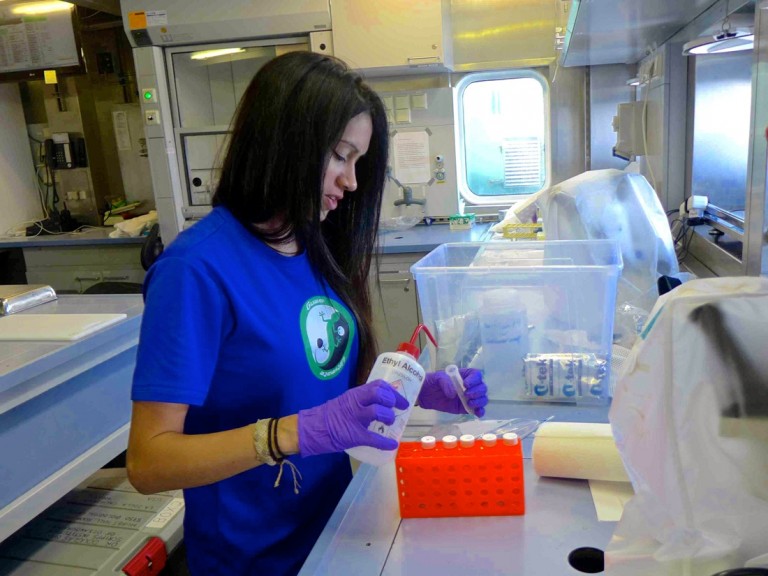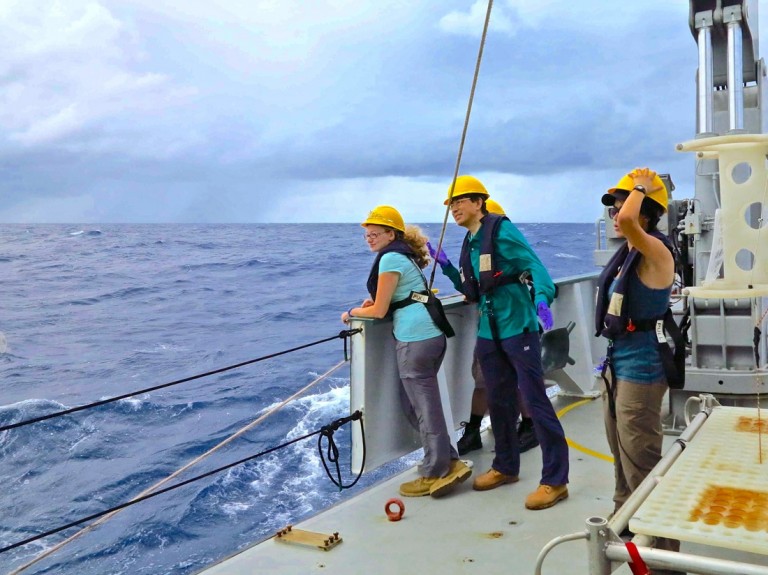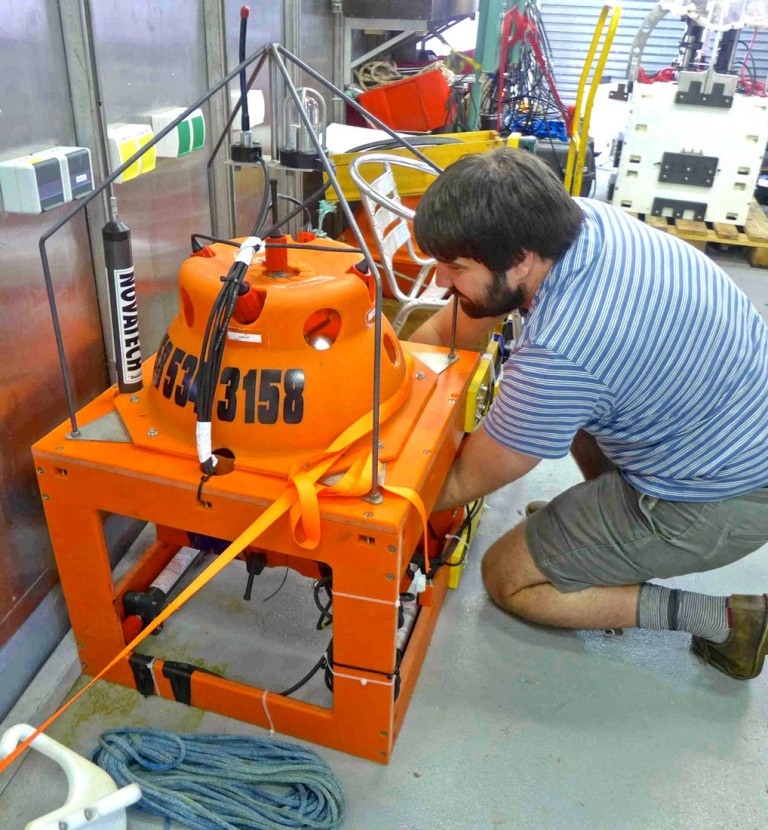After a few whirlwind days of heavy seas — and the heavier loss of two prized landers — Chief Scientist Doug Bartlett’s team scored a big win yesterday. The Leggo lander returned to the R/V Falkor with a treasure trove of animal and microbial life forms from the world’s deepest waters.

Our day began on the ship’s observation deck. Midmorning, the engineers received a radio signal from Leggo alerting us that it was at the surface. “There it is!” announced Bartlett, pointing to a little orange flag bobbing on the roiling, blue waters about 300 meters off the starboard side of the ship. Minutes later the crew had donned hard hats and life jackets and were assembled at the aft deck anxiously awaiting sight of Leggo’s deep-sea haul. They were not disappointed.

New Hadal Zone Species?
In Leggo’s catch net were 23 five-centimeter-long, cotton-candy-colored amphipods. Each creature was quickly and carefully dispatched to the wet lab, then tagged, bottled, preserved, and frozen. Bartlett’s team will keep the animals on ice until they get back to Scripps Institution of Oceanography in San Diego, where the amphipods will undergo genetic and taxonomic analyses. The team will also survey the microbes associated with the amphipods. There could be surprises with the amphipods, says, Bartlett, “But we won’t know if these are a new, undiscovered species for a couple of weeks. Regardless, it’s absolutely thrilling to retrieve life forms from such deep and mysterious waters.”
It’s absolutely thrilling to retrieve life forms from such deep and mysterious waters
Besides seeing what life in the Mariana Trench looks like, our team also got an idea of what it sounds like down there. Earlier on Friday morning, David Barclay successfully retrieved his lander, Deep Sound 2, from a dive of more than 8,900 meters (29,200 feet). Deep Sound 2, which looks a bit like a low-fi R2D2, recorded ambient noise patterns on the bottom that will give him and his team insight into how sound works at extreme depths, and how it is used. These recordings are the deepest-ever attempted — or recorded.

In the Nick of Time
Shortly after the landers were retrieved, the wind and swell picked up again, forcing the team to abandon afternoon deployments. At this writing, the R/V Falkor is steaming toward Sirena Deep, some 170 kilometers (100 miles) southeast of Guam. The hope is that we’ll find calmer waters and be able to make one last splash before we pack up the gear, specimens, and acoustic data and fly home for the holidays.
But for many on the expedition team, Christmas came early this year.

